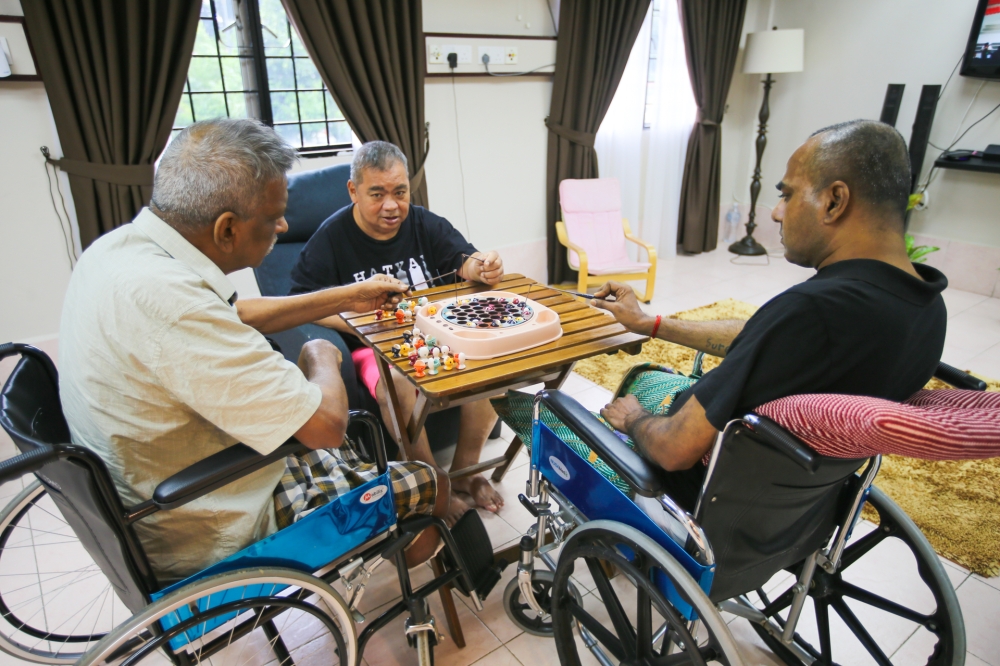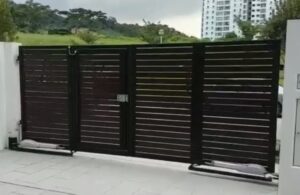KUALA LUMPUR, Nov 8 — Are you a Petaling Jaya resident? Are you looking for caregiving services for your loved ones?
You might soon be able to select a care centre for your family members by looking at how many stars it has under the Petaling Jaya City Council’s (MBPJ) proposed Star Rating System.
This is expected to be rolled out under MBPJ’s recently launched five-year plan — known as the Petaling Jaya Care Economy Action Plan 2025-2030 — to improve caregiving for children, older people and people with disabilities.
MBPJ is the first local council in Selangor to launch such an action plan to implement the state government’s Selangor Care Economy Policy 2024-2030.

A general view of the Petaling Jaya from the PJX HM Shah Tower September 18, 2024. — Picture by Sayuti Zainudin
A quick look at PJ
PJ mayor Mohamad Zahri Samingon last month highlighted that Petaling Jaya is a mature city spanning 97.2 square kilometres, with an estimated 823,794 residents as of January 2024.
He said Petaling Jaya’s density of over 6,000 persons for each square kilometre is far higher than the average density in Selangor, which has over 7.2 million residents.
He said Petaling Jaya currently has 325 care centres (including 18 currently unlicensed): 147 childcare centres or taska, 108 special childcare centres, including for those with special needs and welfare homes, and 70 aged care centres.
Planning must account for the needs of Petaling Jaya’s residents, who numbered 771,687 in 2010 — including 55,377 aged 65 and above (10 per cent), and 166,225 aged 14 and below (20 per cent).
In information provided by MBPJ to Malay Mail, Zahri had said the city council is approaching care as part of Petaling Jaya’s economic and social ecosystem, instead of viewing care as a welfare issue.
“For us, care is not a cost, it is an investment in people, well-being and urban resilience,” he had said during the Selangor International Care Summit 2025 last month, based on MBPJ’s information.

How can care centres in Petaling Jaya be better designed? MBPJ’s multi-agency Care Task Force (including the Social Welfare Department, PLANMalaysia, Bomba, Health Ministry and non-governmental organisations) will coordinate standards, licensing and safety protocols across care facilities in PJ. File photo of a care centre in Setapak, Kuala Lumpur September 4, 2023. Picture by Ahmad Zamzahuri
What will PJ’s Care Economy Action Plan do?
The 37-page PJ Care Economy Action Plan has 40 planned actions spread across four objectives.
Objective 1: Strengthening policy for care centres
The first objective focuses on developing a comprehensive policy framework for care centres.
This includes the introduction of a Star Rating System for taska and care centres, evaluated based on safety, comfort, community integration, quality, and accessibility.
MBPJ also plans to review and update guidelines for childcare and aged care centres to reflect current needs and promote holistic care standards.
Key areas include:
- Ratio of care centres to residents
- Care-friendly design principles
- Designated “green parking” for older persons and persons with disabilities
- Provision of assistive devices at shopping malls and other centres
Objective 2: Building capacity for care services
Under the second objective, MBPJ aims to ensure that all care centres in Petaling Jaya are licensed by 2030.
The plan also supports professional training for caregivers to raise service quality.
To improve accessibility, MBPJ proposes on-demand transport services for older persons and patients, using Mobiliti Selangor’s Demand Responsive Transit (DRT) vans to connect them to care centres, hospitals and mobile clinics.
Objective 3: Raising public awareness and community engagement
The third objective centres on increasing public awareness of care services and encouraging community participation.
MBPJ plans to:
- Establish a one-stop centre to register community volunteers or “micro-service providers”
- Introduce a reward system such as “care credit” to incentivise volunteer caregiving
- Promote community-based support groups, including joint management bodies, residents’ associations and home caregivers — guided by the “jiran jaga jiran” (neighbours caring for each other) concept
Objective 4: Unlocking the economic potential of the care sector
The fourth objective aims to position care centres as part of PJ’s economic ecosystem.
MBPJ plans to:
- Offer financial incentives to care centres that meet high service standards, including assessment tax rebates, licence fee discounts and upgrade grants
- Expand the PJ Social, Environment & Economy Development (SEED) community grant to include care sector initiatives
- Provide subsidies for GPS-enabled or emergency contact devices for older persons and people with disabilities, especially those without insurance or Socso coverage
- Introduce home modification aid for older persons and people with disabilities, particularly in public housing (PPR) and flats
For all the 40 planned actions in the action plan, the listed main implementers include MBPJ and its partners, such as other government bodies, the private sector and non-governmental organisations.
The full PJ Care Economy Action Plan can be accessed here.






